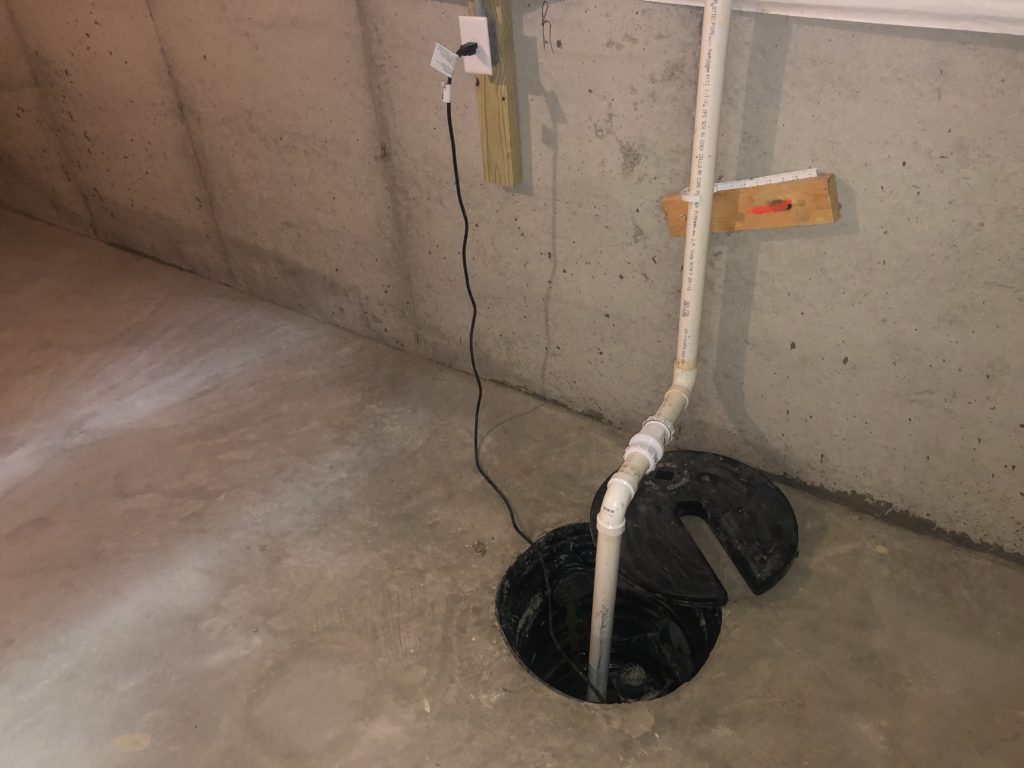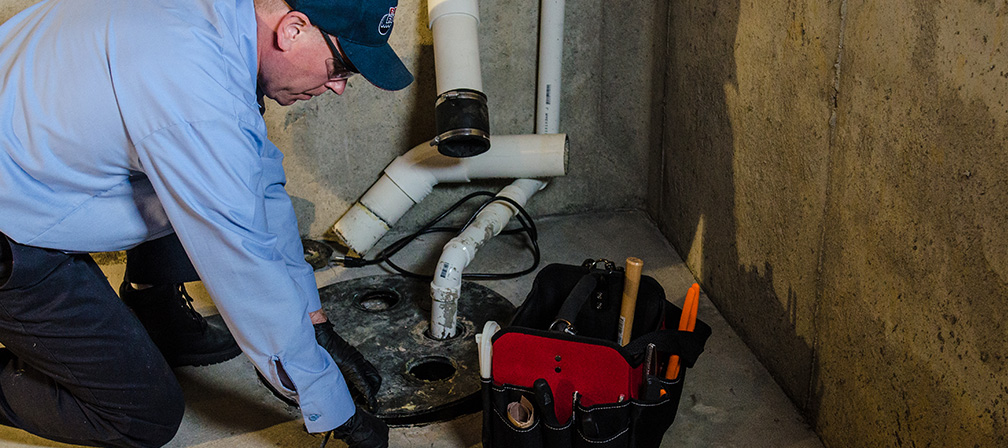Just about every person is bound to have their personal assumption when it comes to Keep Your Sump Pump Clean, It'll Keep You Dry.

Sump pumps are crucial parts in numerous homes, especially in locations prone to flooding or excessive wetness. They assist prevent water damages by efficiently removing excess water from cellars or crawl spaces. However, like any other appliance, sump pumps call for regular upkeep to ensure they work effectively when needed one of the most. Cleaning your sump pump is a crucial part of its upkeep, and comprehending just how to do it properly can save you from pricey repair work and possible catastrophes.
Introduction
Keeping a clean sump pump is vital for its correct performance and longevity. Neglecting this necessary job can lead to blockages, malfunctions, and ultimately, water damages to your residential property. Consequently, learning how to clean up a sump pump is crucial for homeowners who depend on these gadgets to maintain their cellars dry and protected.
Indications of a Dirty Sump Pump
Recognizing when your sump pump needs cleansing is essential for avoiding potential malfunctions. Some typical signs that indicate a filthy sump pump include strange sounds during operation, decreased water flow, and visible debris in the pit. If you observe any one of these symptoms, it's vital to clean your sump pump without delay to avoid any type of more concerns.
Planning for Cleaning
Prior to you begin cleansing your sump pump, it's vital to take some safety and security preventative measures. Begin by turning off the power to the pump to prevent any type of electric crashes. Furthermore, wear suitable protective equipment, such as handwear covers and goggles, to safeguard yourself from dirt, debris, and possible pathogens.
Comprehending the Sump Pump
Prior to diving right into the cleansing procedure, it's important to have a standard understanding of exactly how a sump pump works. Commonly set up in a pit or basin below the basement floor, a sump pump contains several vital elements, including a pump, a float switch, and a discharge pipeline. When water collects in the pit, the float button turns on the pump, which then pumps the water out with the discharge pipeline, away from the structure's foundation.
Step-by-step Overview to Cleaning Up a Sump Pump
Shutting Off the Power
Begin by detaching the power supply to the sump pump to prevent any kind of mishaps while cleaning.
Checking for Proper Functioning
Prior to reinstalling the pump, carry out a fast test to make sure that the float switch turns on the pump properly. Pour some water right into the sump pit and observe the pump's operation. If every little thing is functioning appropriately, you can reassemble the pump and reconnect the power supply.
Eliminating Particles and Dust
Use a container or an inside story to remove any noticeable particles, dust, or sediment from the sump pit. Dispose of the debris properly to avoid it from blocking the pump or the discharge pipeline.
Cleansing the Pump and Float Switch
When the pit is free from particles, carefully remove the pump from the pit. Inspect the pump and the float switch for any type of indications of damages or wear. Make use of a soft brush or towel to cleanse the surface areas and get rid of any gathered crud.
Purging the System
After cleaning the pump and float switch, purge the sump pit with tidy water to get rid of any remaining dust or debris. This will certainly assist make sure that the pump runs efficiently and successfully.
Upkeep Tips to Maintain Your Sump Pump Clean
Along with routine cleansing, there are numerous maintenance ideas you can comply with to keep your sump pump in optimum condition:
- Regular Examination: Examine your sump pump frequently for any indications of wear, damage, or clogs.
- Keeping the Surrounding Location Clean: Make Certain that the location around the sump pit is without debris, dust, and blockages.
- Checking the Pump Regularly: Test your sump pump occasionally by putting water into the pit and observing its operation. This will certainly assist you identify any possible problems before they rise.
Final thought
Cleaning your sump pump is a crucial aspect of its upkeep and makes sure that it operates properly when you require it the most. By adhering to the steps laid out in this guide and including regular maintenance right into your regimen, you can prolong the lifespan of your sump pump and shield your home from water damage.
6 STEPS ON HOW TO CLEAN A SUMP PUMP PROPERLY
UNDERSTANDING SUMP PUMPS
Your sump pump plays a crucial role in protecting your home by managing and removing excess water. It primarily functions as a “shield”, guarding your basement against the damaging effects of water accumulation. The pump is housed in a sump pit in the lowest part of your basement, and its job is to pump out any water that collects there.
During heavy rainfalls or when snow melts rapidly, water can infiltrate your basement, posing potential risks like flooding, structural damage, and harmful mold growth. Here, the sump pump springs into action, pumping out the intruding water and directing it away from your home.
SAFETY FIRST
Before cleaning, remember to prioritize safety. Disconnect the sump pump from the power source to prevent any accidental electric shocks. Also, wear sturdy gloves to protect your hands from any sharp or dirty components within the pump.
REMOVE THE SUMP PUMP
After ensuring your safety, the next step is to remove the sump pump from its pit. Doing this might require careful maneuvering as you don’t want to damage any pump components. Once removed, clean the sump pit to remove any accumulated debris or sludge.
INSPECT THE PUMP
Inspect the pump for any visible signs of wear or damage. Check the power cord, float switch, and impeller housing. If any components look worn out or damaged, consider replacing them to ensure optimal performance.
CLEAN THE PUMP
Thoroughly clean the pump with warm, soapy water. Make sure to rid it of any dirt, gravel, or other debris that might impede its performance. You can use a toothbrush to clean the small, hard-to-reach parts of the pump.
REINSTALL THE SUMP PUMP
- Reinstall the pump into the sump pit
- Make sure it’s positioned correctly to remove the water effectively
- Once it’s back in place, reconnect it to the power source
TEST THE PUMP
Finally, pour some water into the pit to ensure the pump works correctly. It should start automatically and begin pumping out the water; if it doesn’t, check the power source and the positioning of the pump.
Remember, while cleaning your sump pump is an essential part of home maintenance, hiring a professional plumber for a thorough inspection and cleaning at least once a year is also important. This will ensure that your pump is in optimal condition, ready to protect your home from potential water damage.
BEST PRACTICES FOR CLEANING SUMP PUMP DISCHARGE PIPES
- Regular Inspection: Regularly inspect your discharge pipes, especially during heavy rainfall or snowmelt periods. Look for any signs of blockage or damage. Early detection of problems can prevent serious issues down the line.
- Periodic Cleaning: Over time, sediment and debris can accumulate in the discharge pipes, impeding the flow of water. Regular cleaning helps keep the pipes clear and functioning efficiently. You can use a high-pressure water jet to effectively clean the pipes.
- Insulation During Winter: In colder climates, discharge pipes can freeze, blocking the outflow of water. Protect your discharge pipes from freezing temperatures by insulating them with foam pipe insulation. This will ensure the sump pump can continue to discharge water even in freezing conditions.
- Proper Positioning: The discharge pipe should be positioned to direct water away from your home’s foundation. Improper positioning can lead to water seeping back into the basement. Ensure the pipe is long enough and angled correctly.
- Installation of a Check Valve: A check valve prevents water from flowing back into your sump pit after the pump has pushed it out. Installing a check valve helps maintain the efficiency of your sump pump and reduces the risk of flooding.
- Minimize Pipe Turns: Every curve or turn in the discharge pipe can decrease the efficiency of water flow. By minimizing turns and bends in your discharge pipe, you can increase the efficiency of your sump pump.
https://www.fullspeedplumbing.com/how-to-clean-a-sump-pump-properly9999/

I hope you enjoyed our topic on How to Care for Your Sump Pump. Thanks a lot for finding the time to read through our short article. You should take the opportunity to share this blog entry if you liked it. Thank you for taking the time to read it.
About This
Comments on “Handy Tips for Maintaining a Sump Pump”